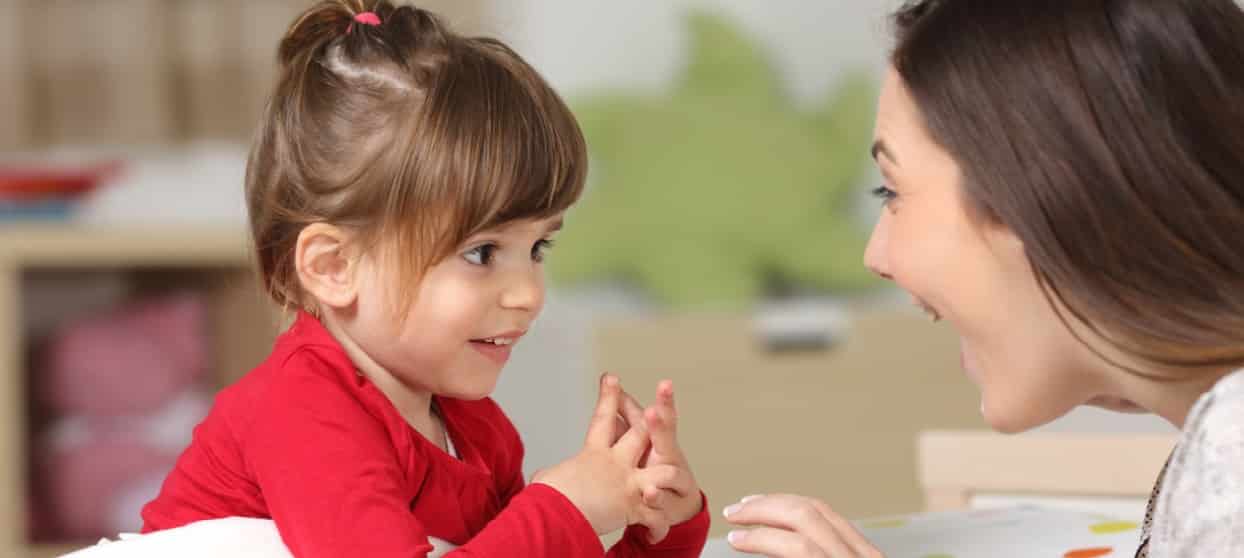Effective communicators are the kind of people who, when they speak with you in private, you hang on their every word. Listening from the audience as they speak from the podium, you know you’re being silly, but you feel they’re speaking only to you. And it works both ways: when you speak to them, it feels like they’re really listening—like they really hear you. Now you might not have thought about this, but wouldn’t it be great if you could teach your child to have those skills: to be an effective communicator?
It’s true that some people are just born to be effective communicators. That doesn’t mean, however, that good communication skills can’t be taught. And if they can be taught, they should be taught, for effective communicators are the star pupils of every teacher’s class. Not to mention: they’re sought after as both friends and employees.
By teaching children to be effective communicators, parents broaden their opportunities. Those with a gift for communication have wider social circles, and can make all kinds of friends and connections. Their career opportunities will be more varied, with every possibility of rising to the top, no matter what field they choose.
Becoming an effective communicator can begin in infancy, when a parent makes eye contact with a baby, and speaks at just the right rhythm and tempo. It’s not just instinct. A mother knows when baby has had enough speech, when to pull away. The mother reads the baby’s cues and follows them.
That is pretty much the definition of being an effective communicator: reading the cues of your listeners and following them. And sometimes being the listener, watching for and reading the cues of the speaker. And by reading and following cues, as your infant looks on, you are modeling effective communication for your baby.
Teaching children to become effective communicators is a two-pronged process. It’s first and foremost about understanding the qualities that define effective communication. Then, once you know what effective communication is, you can set about showing children the ropes of being effective communicators.
Effective Communicators:
- Refrain from speaking quickly
- Are not too loud or too soft in their speech
- Never interrupt or speak when others speak, but await their turn
- Practice active listening by making eye contact, turning to face the other person, and responding with comments and questions that show they are paying attention
- Consider others before themselves, avoiding the use of “me” and “I”-centered speech whenever possible
- Ask others for their opinions and ideas
- Never fidget
- Speak clearly
- Pronounce words properly
- Use good grammar
- Never use curse words in polite company
Use Daily Conversation for Practice
Having everyday conversations with your child is a great way to coach them in becoming effective communicators. Show them that what they say interests you and respect them enough to let them have their say. By the same token, children should listen and respond to you, making eye contact and making sure to face you. Hands and feet should be still. Speech should be clear, never rushed, and not too loud or too soft.
Children are always watching and absorbing, so you can continue the lesson by having polite, effective conversations that clearly express your views with others, such as a spouse, while children are in listening and watching distance. The conversations your child witnesses or takes part in at home, are the foundations for his own developing communication skills.
During daily conversations at home, it’s fine for you to gently guide and correct your child’s behavior. When you are in public, don’t draw attention to your child’s mistakes. This might embarrass your child and cause him to be self-conscious and awkward about conversing with others in public. Note that in correcting your child only at home, he will learn that home is a safe place to learn. By not correcting your child in public, you show him you respect him enough not to hurt his feelings or embarrass him. An exception: if your child interrupts you while you are chatting with someone else, pause and turn to the child and ask him to wait until you’re finished speaking or listening, please.
If children balk at being directed to make eye contact or face you as the two of you speak, explain that doing so shows interest in what you are saying and is a sign of respect. Ask how he would feel if he were sharing an important idea and his friend kept his back to him and played with a toy while he was speaking. Looking away from someone who is speaking is hurtful, which means it is not good manners, since manners are about caring for others.
You can also talk with your child about being an effective communicator. A parent might, for instance, mention getting trapped at a social event by someone who would not stop talking about himself and who was very boring. You can explain how you tried to give the person various cues (looking at your watch, yawning, looking around the room at something else, grimacing), but the person was seemingly unable or unwilling to read you. Discuss this with your child. Ask what he would have done in your place to politely disengage and why he thinks the person didn’t read your cues.
Effective Communicators Mirror
Repeating what people say to us makes them feel heard. Mental health professionals have long known the value of mirroring: repeating a patient’s words back to him. You can play a mirroring game with your child to practice this skill. Here is a sample dialogue using the mirroring technique:
“I was taking out the trash when I saw a raccoon.”
“You saw a raccoon?”
Yes. I was scared at first, then saw his eyes were gentle.
“He had gentle eyes?”
“Yes. I didn’t want to frighten him so I moved very slowly.”
“It’s nice you didn’t want to frighten him and that you moved so carefully and slowly.”
It’s easy to see how the child who saw a raccoon felt validated and warm after relating his experience to someone who cared enough to really listen. That’s how mirroring works. It proves respect and caring for the speaker. You can practice mirroring with your child, taking turns being speaker and listener.
The Um Game
The Um Game is played by having your child speak about anything she likes, such as a favorite teacher, or toy. Time your child to see how long she can go without using “um,” “uh,” “like,” “you know,” or “er.” This game helps your child become more articulate and can even increase vocabulary. It also teaches eloquence. No great speaker was ever guilty of interjecting “um,” “uh” or “you know,” into a momentous speech.
Social Situations
Children should be shown how to enter a conversation in a polite way. The right way is to walk up to the group, smile, listen to what people are saying, and wait until someone speaks to you before joining in. Your child should also learn to gracefully handle the situation when it is the other way around. If someone wants to join his conversation, he should smile and nod to the person. Once the speaker has finished speaking, your child can greet the new person and make introductions if necessary.
Ending conversations in a pleasant way is also part of being an effective communicator. It’s rude to just walk away from people when you’ve been chatting. The child should, instead, learn to explain why he must leave and remark that the conversation has been enjoyable. He might say, for instance: I need to go help my mom in the garden, but it was great talking with you!
Children should also learn what is and is not an appropriate topic for discussion. It’s one thing for the family to celebrate mom’s promotion at the office, but inappropriate for your child to brag about it to her friends. Some things are private. Also, children should learn to draw others out in conversation, rather than speak only about themselves and their experiences. Drawing out others in conversation is thoughtful, monopolizing the conversation and speaking only of one’s self is rude and boring.
An understanding of nonverbal communication and cues must be taught from a young age, since children only develop a sense for these later on. Yawning during a conversation, speech, lecture, or sermon is rude and children should learn to try to suppress a yawn during these occasions. Rolling one’s eyes or frowning or otherwise making faces while someone is speaking is bad manners, too. Playing with hair, turning away from the speaker, picking at your nails or nose, and looking at your watch while someone is speaking (with the exception of the bore who will not let you go!!) are all behaviors that are considered poor manners because they make people feel bad.
Children also need to be on the watch for nonverbal cues in others. A child should, for instance, learn to understand and be sensitive to signs that a conversation has gone on long enough or that a person needs to leave. That calls for finishing the conversation or winding up a story. Children should also be on watch for signs that a topic makes the listener uncomfortable and learn how to change the subject.
Children catch on quicker than you’d expect, and come to understand that being effective communicator means being polite, but getting the point across and hearing others, too. Learning to be that sought-after conversationalist and friend means developing listening skills, using good grammar, and most of all, sensitivity. In working with children early on, parents help their children grow to become refined communicators who are adept at speaking to anyone in any situation.
